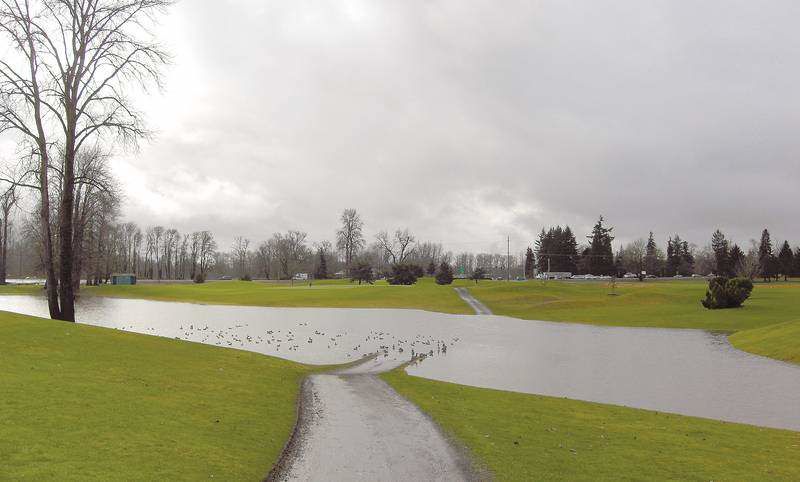A wet round in Corvallis
Published 4:00 am Wednesday, January 16, 2008

- The right side of No. 3, a 399-yard par 4, the hardest hole at Trysting Tree, acts as a drainage ditch during the wet winter.
CORVALLIS —
Nothing is worse for a golfer than January in a winter sports haven such as Central Oregon. While others are lining up for snow sports, I’m dying to get back out on the golf course.
So I took my rusty swing to the Willamette Valley last week, where it was wet but just warm enough to play 18 holes without hyperthermia setting in.
I chose Oregon State University’s home golf course, Trysting Tree Golf Club, to see if the 130-mile drive west to play golf is worth the effort.
Playing a round in the valley’s weather is less about your score, as I found, and more about surviving the test without walking off the course early.
Though Friday was relatively dry, the course had plenty of water on it after being soaked with heavy rains in the previous days.
Golf is a different game in wet conditions.
Your ball doesn’t travel as far through the moist air and across the wet turf. And the ground gives too much with a short iron, leaving a fresh canyon in your wake with every swing.
Golfers with a great short game and imagination fare well — I, unfortunately, am without such assets.
But Trysting Tree’s plain, almost muni-course exterior hides a really well-designed golf course.
At 6,674 yards from the blue tees and with a slope of 127, Trysting Tree is difficult in just the right places. It can be long on some holes but with few hazards — or at least I imagine that is the case in the summer.
In the winter, water hazards are created where there normally are none, thanks to a drainage system that pools water in certain low areas on the course. And the designed water hazards seem even bigger.
But this is a good thing, as I found out.
The fairways were remarkably playable despite the days of heavy rain, and the greens were even better.
Unfortunately, I spent too much time in the longer grass to fully take advantage.
The course, which appears to be forgiving during summer, will punish you for drifting off the fairway because the long grass soaks up water like a sponge.
Just walking around the golf course in such conditions can be a challenge.
I learned this early in my round.
Walking from the elevated green on No. 2 to the tee box on No. 3, the ground gave away, sending me tumbling down the small hill.
That left me covered in mud for the remainder of the round and ill-prepared to tee off on the 399-yard par-4 No. 3 — the hardest hole on the course thanks to a drainage pond that engulfs the entire right side of the fairway.
Brian Watts, head coach of the Oregon State men’s golf team, told me that my experience was typical — that everybody seems to take a tumble their first time on Trysting Tree.
I learned my lesson and kept sure footing the rest of the way.
The most appealing section of the course, because of both its scenery and difficulty, is a four-hole stretch starting on No. 12. The par-5, 552-yard No. 14, which runs along the Willamette River, is tough on any golfer who tends to hit the ball to the right.
Hit a slice, and your tee shot will easily find the river. Push the ball right on the second shot, and you will find a watery grave created by a pool of water nestled in a thatch of trees. Oh, and you can’t see the water from the fairway.
Still, if you are itching to play golf now, Trysting Tree is worth the trip.
For only $35 to walk the course — which has hosted numerous state high school championships since opening in 1988 — is as good a deal as you’ll find.
A student at an in-state university pays $18, and a junior golfer under the age of 18 pays $10 for 18 holes.
Designed by acclaimed architect Ted Robinson, creator of such courses as Sahalee Country Club in Sammamish, Wash., and Tokatee Golf Course in Blue River, the course has a championship feel that makes playing it worth the price.
If you play Trysting Tree during the week, you might also get a glimpse of the Oregon State golf team practicing on the range, humbling the average golfer even more than the course itself.
Golfing the Willamette Valley this time of year isn’t for the fainthearted, judging by just how few of us were on the course.
But it sure beats not playing at all.






